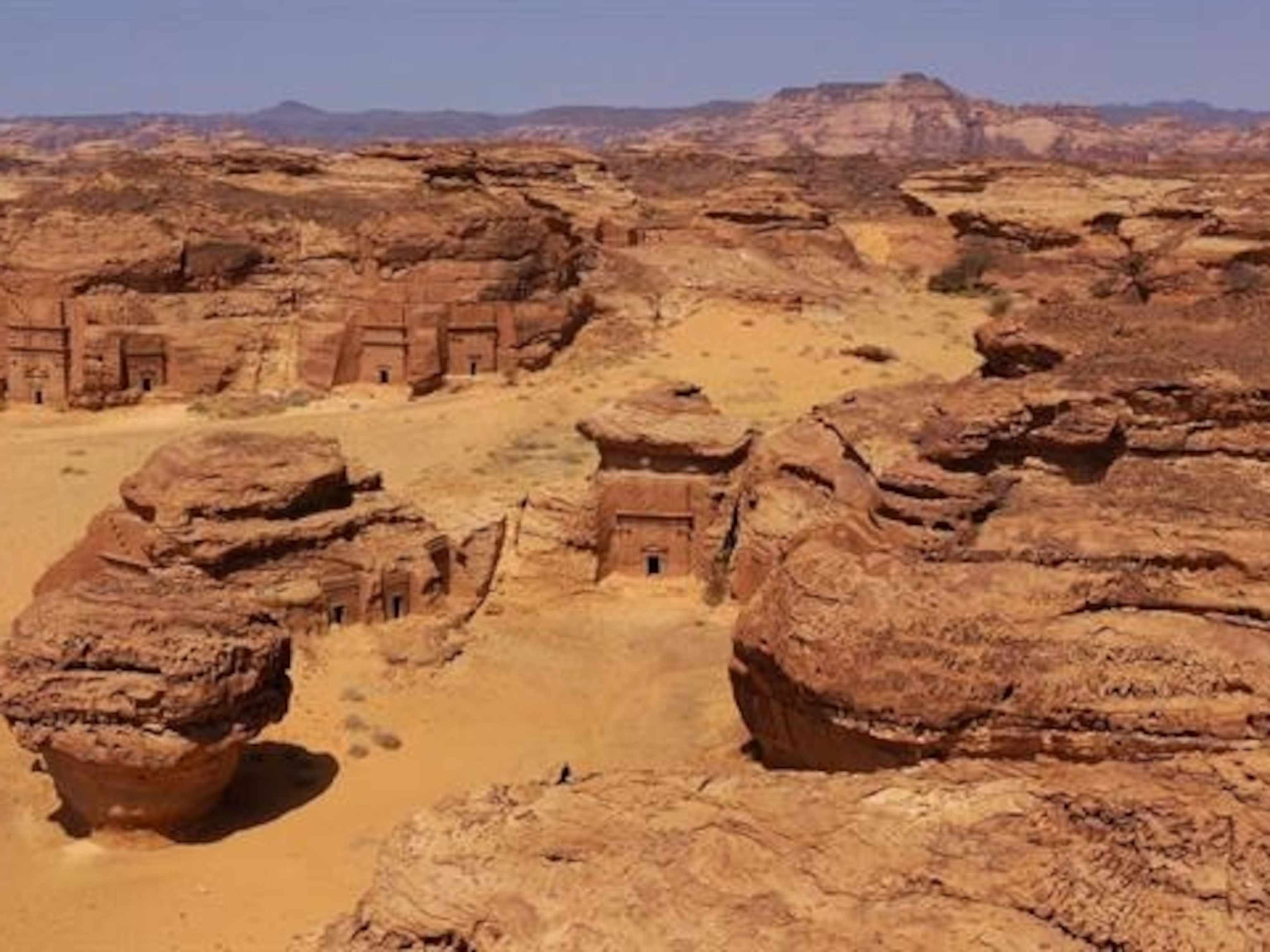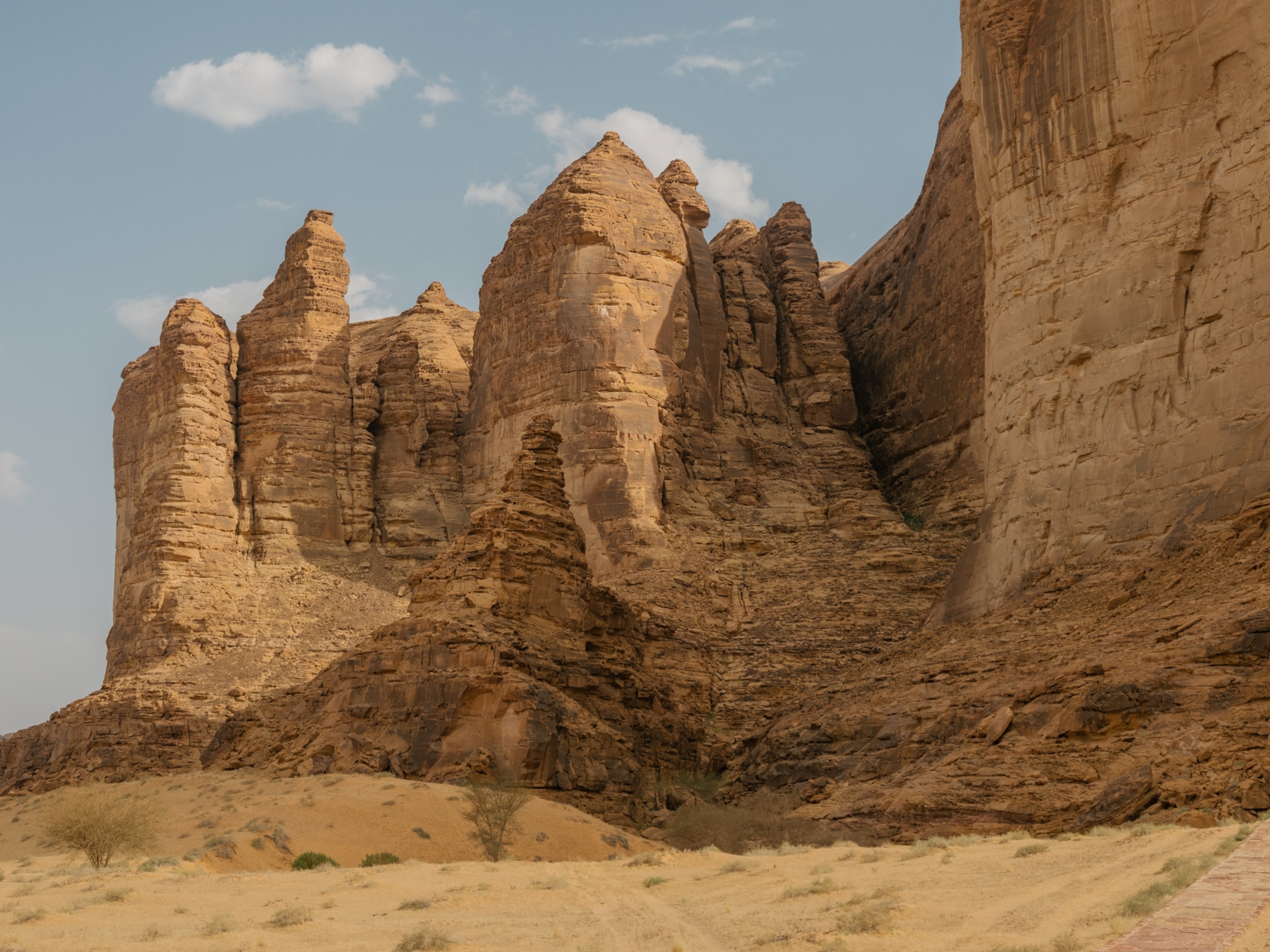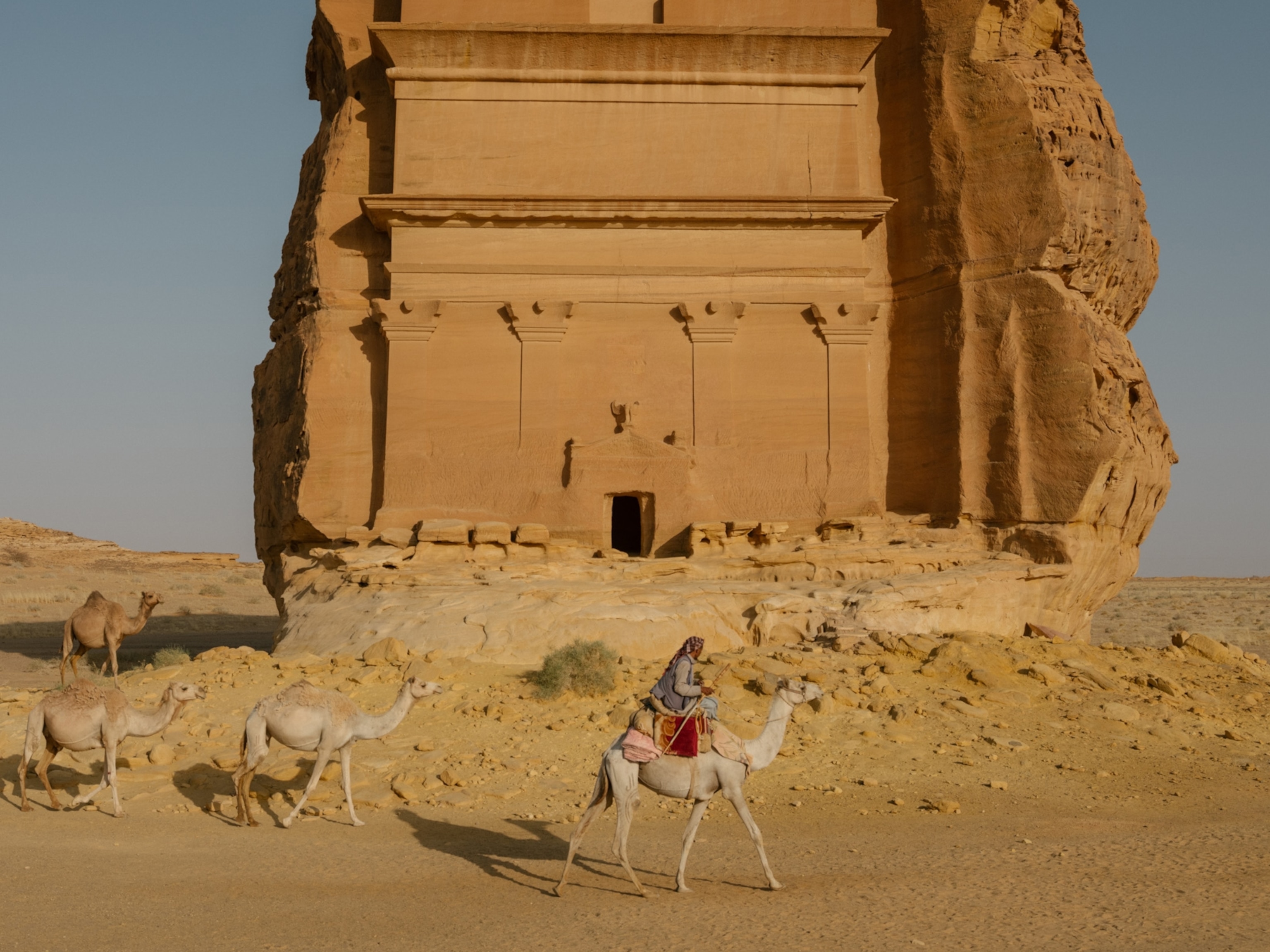Can we bring a species back from the brink?
Reintroduction programs restore species to lands from which they have disappeared. For some animals, it’s their last hope for survival.
Thousands of years ago, an artist painstakingly carved the silhouette of a big cat into a rockface near AlUla, Saudi Arabia. The feline form, with its flat facial profile, long tail, and lithe figure, is clearly an Arabian leopard. The majestic animal was once a common predator in the region, and the ancient artist captured the creature at its most animated—poised to pounce on some unseen prey. The artist is long gone, and fears are growing that the Arabian leopard may soon be gone too—none have been observed in AlUla for over a decade. Every year, hundreds of species become extinct with even more creeping toward that fate being classified as vulnerable, endangered, or, like the Arabian leopard, critically endangered. Around the world, conservationists are working to save some of the most threatened species through reintroduction programs that restore animals to places from which they have disappeared—efforts that could bring species like the Arabian leopard back from the brink.
(Can You Spot the Difference Between a Jaguar and a Leopard?)
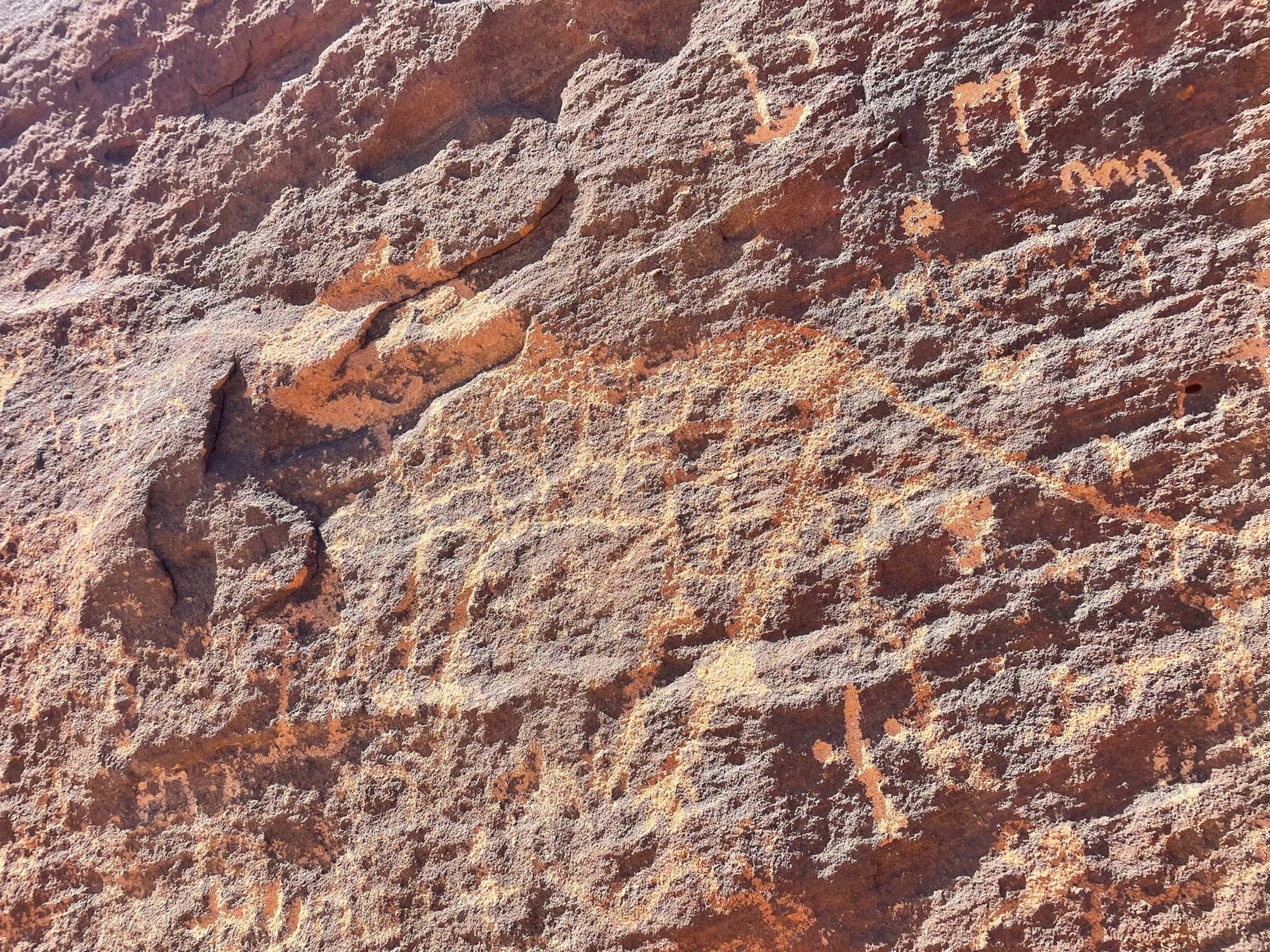
Restoring lost species to their natural habitats is more than a gesture, it can be vital to maintaining the biodiversity that underpins a healthy ecosystem: Take away even one species and the ripple effects can be extensive. Before the reintroduction of wolves into the park in 1995, stands of willow and aspen trees in Yellowstone National Park in the U.S. were in decline, beaver populations were shrinking, and even rivers flowed differently. The problem contributing to the park’s imbalance was the eradication of wolves decades earlier. Effectively hunted out of the park by the 1930s, wolves no longer posed a threat, and elk flourished and overgrazed the park’s saplings so that new trees struggled to grow.
With fewer trees, beaver numbers dropped, causing the course and even the water temperature of Yellowstone’s rivers to change. The careful reintroduction of wolves to recovery sites in Yellowstone has seen beaver and tree populations restored to balance.
This notable success highlights the power of reintroduction programs to actively re-establish species, but it can be a lengthy, complicated, and costly process. The first step is to establish the need for reintroduction by monitoring a species’ numbers and range, and understanding the rate, causes, and impacts of its decline. Even using technology such as drones and camera traps, precise numbers are still hard to obtain. However, any species classified as “critically endangered” on the IUCN Red List are at “extremely high risk of extinction” and likely to need human intervention to survive. This often starts with detailed scientific studies of the animal, its behaviors, and even its genetics to determine what’s needed for a successful reintroduction.

Reintroductions usually demand a sizeable and healthy animal stock, presenting conservationists with the conundrum that species scarcity or sickness is usually the catalyst for action. Sometimes animals from other wild populations can be translocated, but great care must be taken not to harm those source populations. Often new stock needs to be propagated using captive breeding programs, and these are much more scientific than just putting males and females together and letting nature take its course. Genetic diversity is essential to a successful captive breeding program—and a species’ survival—so detailed records of each animal’s ancestry are kept, and breeding pairs are carefully selected based on their genetics to avoid inbreeding. Even the temperament of an animal may be taken into account. Still, the mating game can be a slow and frustrating process.
In addition to breeding genetically appropriate animals, the recovery site itself needs to be ready to receive them. Although the species may have historically thrived in a particular location, its suitability isn’t always a given. The species’ decline is likely linked to ongoing environmental factors, including climate change, invasive species, and diminishing food supply, as well as human factors such as pollution, land development, or persecution. Solving these underlying problems is fundamental to a reintroduction’s success, but takes research, time, and effort.
Beyond this, the recovery site may need to be adapted. Temporary fencing can help to maintain control, reducing risks from invasive species and minimizing human impact while the reintroduction becomes established. The area may also benefit from re-wilding, boosting other native plants and animals to create a habitat that best meets the species’ essential needs, including shade, shelter, and food. The goal is to minimize human intervention and build a self-sustaining colony as part of a healthy ecosystem. Whether this succeeds or fails, ongoing monitoring of a reintroduced population provides crucial lessons for future programs, increasing their chance of success.
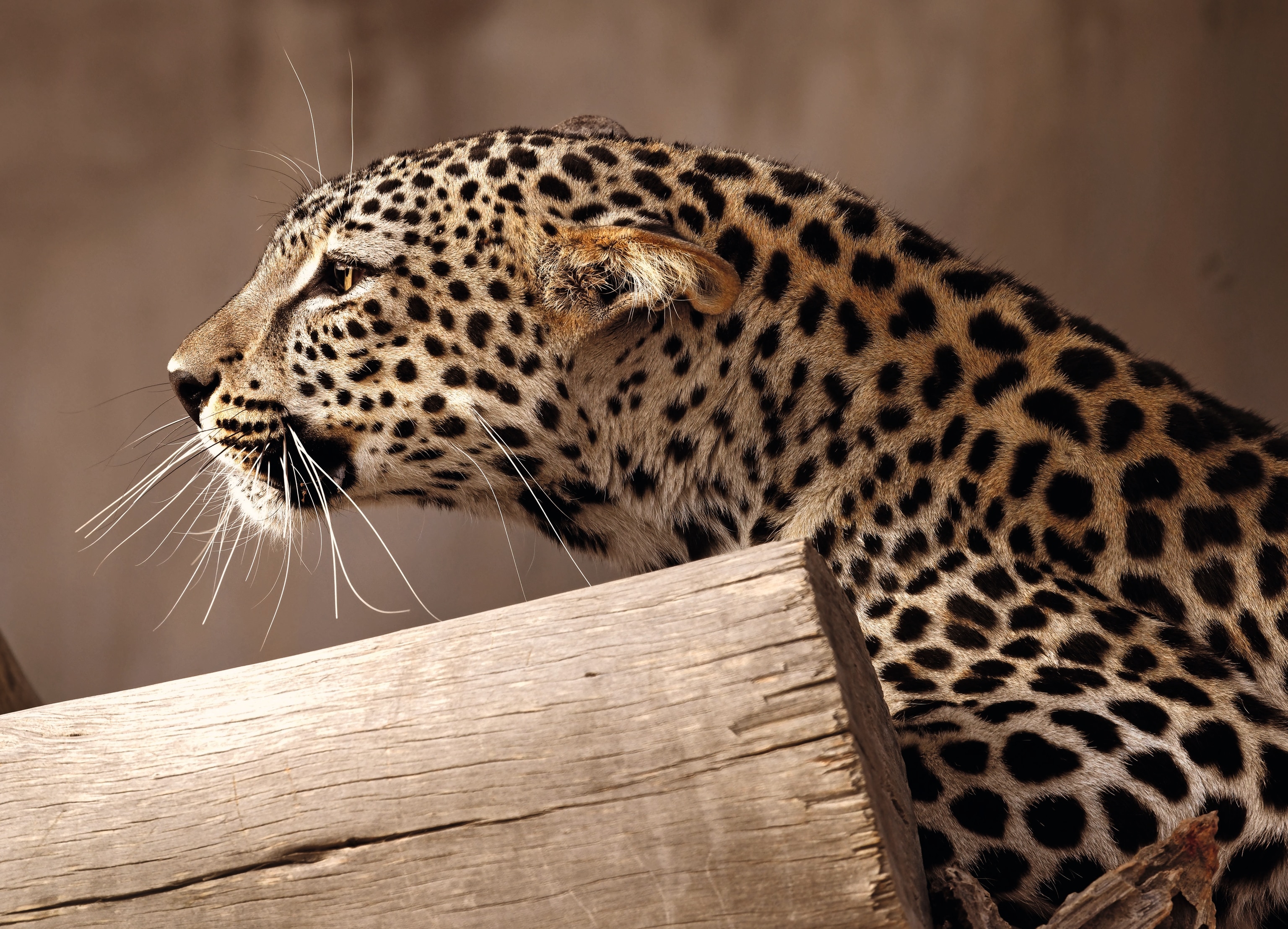
This could be good news for the Arabian leopard. With less than 200 left in the wild and no documented sightings of a leopard in Saudi Arabia since 2014, a crucial reintroduction program has been commissioned to bring the big cat back from the brink. It began with efforts to establish their numbers in Saudi Arabia, but while camera traps captured images of thousands of animals at 13 sites over two years, not a single leopard was observed. It’s a disappointment that has reinforced fears for the species, and resulted in an even greater sense of urgency to this big cat’s conservation.
The plan is constantly evolving, following the science as data is meticulously gathered. It currently centers on reintroducing at least five captive-bred leopards to three priority sites by 2030, including Harrat Uwayrid and Harrat AlZabin. These near-neighboring locations provide the extensive mountain terrain Arabian leopards need—rock ledges and caves for hunting and shelter. These habitats are being scientifically scrutinized to establish the extent of vegetation, the numbers of potential prey, and the activities of potential competitors, such as wolves. Analyses of these crucial factors will determine each site’s final suitability and dictate any modifications, from restoring native vegetation to reinforcing prey numbers of gazelle and ibex to ensure they can sustain the reintroduction.

From a sandy, rock-strewn floor, an Arabian leopard cub launches itself onto the branch of a tree. She slips, recovers, and gets back up again—it’s all part of learning to be a leopard. This is Amal and great things are expected of her; even her name means “hope.” Born in the captive breeding program at Taif, she is now one of 19 Arabian leopards cared for in captivity that are the vital link to the future of the species. They will continue to breed, growing in numbers until finally cubs can be released into the wild where they will roam, watched over by specially trained rangers tasked with anti-poaching efforts, scientific monitoring, and community education efforts. It’s a truly ambitious project—and one with high hopes. For now, the poised figure of Amal forms a fragile but breathtaking link to the past as the legacy of the Arabian leopard echoes through the ages.
Journey through time to discover the rich history of AlUla here.
